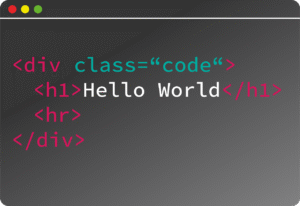ES6 (ECMAScript 2015) introduced a number of significant updates to JavaScript, which made the language more powerful, easier to work with, and more consistent. Here’s a rundown of the key features in ES6:
1. Let and Const
let: A block-scoped variable declaration. Unlikevar,letrespects block scoping, which reduces errors in variable hoisting and redeclarations.jslet name = "Alice"; if (true) { let name = "Bob"; // This 'name' is scoped to this block } console.log(name); // Aliceconst: A constant declaration that must be assigned a value at the time of declaration and cannot be reassigned.jsconst pi = 3.14; pi = 3.14159; // Error: Assignment to constant variable
2. Arrow Functions
- Arrow functions provide a shorter syntax for writing functions and also lexically bind the
thisvalue (which means they don’t have their ownthis).jsconst add = (a, b) => a + b; const square = x => x * x; // Single parameter doesn't require parentheses const greet = () => "Hello!"; // No parameters- Arrow functions are particularly useful for concise callbacks.
3. Template Literals
- Template literals allow for embedded expressions inside strings and multi-line strings without the need for concatenation.js
const name = "John"; const age = 30; const message = `My name is ${name} and I am ${age} years old.`; console.log(message); // My name is John and I am 30 years old. // Multi-line string: const multiline = `This is a multi-line string.`; console.log(multiline);
4. Destructuring
- Destructuring allows you to unpack values from arrays or properties from objects into distinct variables.
- Array Destructuring:js
const arr = [1, 2, 3]; const [a, b] = arr; console.log(a, b); // 1, 2 - Object Destructuring:js
const person = { name: "Alice", age: 25 }; const { name, age } = person; console.log(name, age); // Alice 25
- Array Destructuring:
5. Default Parameters
- ES6 allows functions to have default values for parameters if no argument is passed.js
function greet(name = "Guest") { console.log(`Hello, ${name}!`); } greet(); // Hello, Guest! greet("Alice"); // Hello, Alice!
6. Rest and Spread Operators
- Rest (
...): Collects all remaining elements in an array or object into a new array or object.jsconst sum = (...numbers) => numbers.reduce((a, b) => a + b, 0); console.log(sum(1, 2, 3, 4)); // 10 - Spread (
...): Expands an array or object into individual elements.jsconst arr1 = [1, 2]; const arr2 = [3, 4]; const arr3 = [...arr1, ...arr2]; console.log(arr3); // [1, 2, 3, 4] const obj1 = { name: "Alice" }; const obj2 = { age: 25 }; const obj3 = { ...obj1, ...obj2 }; console.log(obj3); // { name: "Alice", age: 25 }
7. Classes
- ES6 introduced classes, a syntactic sugar over JavaScript’s prototype-based inheritance. Classes make it easier to work with objects and inheritance.js
class Person { constructor(name, age) { this.name = name; this.age = age; } greet() { console.log(`Hello, I'm ${this.name} and I'm ${this.age} years old.`); } } const john = new Person("John", 30); john.greet(); // Hello, I'm John and I'm 30 years old.
8. Modules
- ES6 introduced a native module system using
importandexport. This allows you to split your code into smaller, reusable pieces.- Exporting:js
// myModule.js export const greet = (name) => `Hello, ${name}`; export default function() { console.log("Default export"); } - Importing:js
import { greet } from './myModule'; greet("Alice"); // Hello, Alice
- Exporting:
9. Promises
- Promises provide a cleaner way to work with asynchronous operations (compared to callbacks).js
const fetchData = new Promise((resolve, reject) => { const data = true; // Simulate async data fetch if (data) { resolve("Data fetched successfully!"); } else { reject("Error fetching data."); } }); fetchData .then(response => console.log(response)) // Data fetched successfully! .catch(error => console.log(error)); // Error fetching data.
10. Map, Set, WeakMap, WeakSet
Map: A collection of key-value pairs, where keys can be any data type (including objects).jsconst map = new Map(); map.set("name", "Alice"); map.set("age", 25); console.log(map.get("name")); // AliceSet: A collection of unique values (no duplicates).jsconst set = new Set([1, 2, 3, 3]); console.log(set); // Set { 1, 2, 3 }WeakMap: Similar toMap, but the keys are weakly referenced (garbage-collected if there are no other references to them).WeakSet: Similar toSet, but the elements are weakly referenced.
11. Symbol
- A new primitive type that is unique and immutable. It’s useful for creating unique property keys.js
const uniqueKey = Symbol('description'); const obj = { [uniqueKey]: "value" }; console.log(obj[uniqueKey]); // value
12. Iterators and Generators
- Iterators are objects that define a sequence of values (like arrays or strings).
- Generators: Functions that can pause and resume, allowing you to work with iterators more easily.js
function* generateNumbers() { yield 1; yield 2; yield 3; } const generator = generateNumbers(); console.log(generator.next()); // { value: 1, done: false } console.log(generator.next()); // { value: 2, done: false } console.log(generator.next()); // { value: 3, done: false }
13. Enhanced Object Literals
- ES6 allows for shorthand syntax in object literals.js
const name = "Alice"; const age = 25; const person = { name, age, greet() { console.log(`Hello, I'm ${this.name}.`); } }; person.greet(); // Hello, I'm Alice.
14. FinalizationRegistry & WeakRefs
- These features allow you to work with objects that might be garbage collected.
WeakRefallows you to hold a reference to an object without preventing it from being garbage collected, whileFinalizationRegistrylets you register callbacks when an object is garbage collected.
In Summary:
ES6 brought some fantastic features that have greatly improved the syntax and capabilities of JavaScript. These features not only make code cleaner and more expressive but also enable developers to write more efficient and maintainable code.



































































































